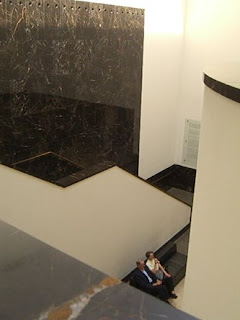Richter is known both for figurative work based on photographs and for abstract paintings. The
exhibition starts with early black and white paintings made from magazine photographs, as well as from his own photographs. On the left is Ella, his daughter, painted in 2007 - her downward gaze references a self-portrait of 1996 in which Richter is looking down.
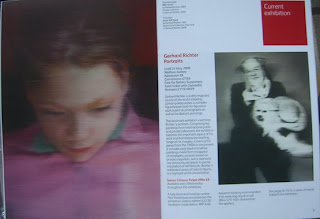
On the right is possibly the most disturbing portrait in the exhibition, again a family member, his father, Horst, from a photo taken at his sister's wedding in 1959. "The image is an unflattering one," says the caption, "showing Horst holding a woman's hat, with clown-like hair and what the artist describes as 'a ridiculous Spitz dog'. After Horst's death, Richter discovered that Horst was not his biological father: appearance and reality being separate not only in Richter's art, but also in life."
Instead of having to read captions on the wall, you are given a little square book with a caption on each page - perfect for making thumbnails to remind yourself of the pictures later (and the words can be considered and rearranged in a blog entry). The exhibition is in 5 rooms: The most perfect picture; Devotional pictures; Continual uncertainty; Private images; Personal portraits - a classification imposed by the curator.
Why did Richter use photographs? The booklet says: "He was seeking a more direct and objective way of representing the world. A photograph, being machine-made, was in his view 'the most perfect picture'. Using photographs as the basis for paintings freed him from conventional artistic processes involving the creation of motifs, colour, composition and expression." (An artist who wants to be free of conventional artistic processes - at a time when the artmakers were moving into what's called postmodernism - ok.)
He said: "I don't think the painter need either see or know the sitter. A portrait must not express anything of the sitter's 'soul', essence or character." And also, "I don't know what I want. I am inconsistent, non-committal, passive; I like the indefinite, the boundless; I like continual uncertainty."
The portraits increasingly sustain the tension between inviting yet resisting interpretation; he commented, "You realise that you can't represent reality at all - that what you make represents nothing but itself, and therefore is itself reality."
And then there's the blurring. It "removes the excess of unimportant information".
And the ambiguity, which is analogous to everyday experience, where appearances conceal an unknown reality.
The central theme of his work is that reality cannot be seen or known but remains hidden beneath a veneer of appearance - and these portraits express this impersonal reaction - no interpretation from the artist, or imposing of meaning - yet event hough he intends "to leave everything as it is" he acknowledges that "something new creeps in ... that even I don't really grasp".
See more
here, including this multiple-exposure portrait of Gilbert and George, which for me was the most interesting single piece in the show:

Richter said also, "You relaise you can't represent reality at all - that what you make represents nothing but itself and therefore is itself reality."
 "Square peg round hole" is a way of putting to good use the bondawebbed bits of fabric that you cut circles out of. I like the way those square bits can be stretched to reveal the cut where the scissors have entered -
"Square peg round hole" is a way of putting to good use the bondawebbed bits of fabric that you cut circles out of. I like the way those square bits can be stretched to reveal the cut where the scissors have entered -



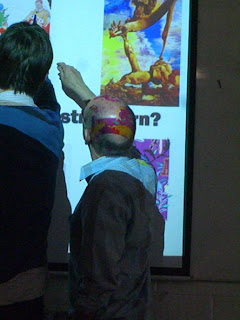
















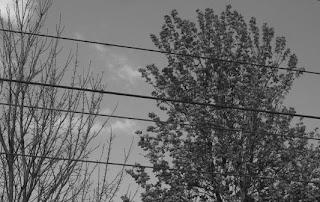
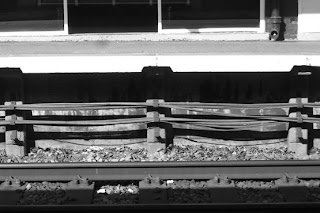





 ...or, a fresh cut -- a slip of the scissors and you could have ... a window-box?
...or, a fresh cut -- a slip of the scissors and you could have ... a window-box? You gotta be open to new ideas, right?
You gotta be open to new ideas, right?




 In the centre rear of the photo, you can see the famous
In the centre rear of the photo, you can see the famous 